































Airlines, Airports and Airliners 21 February 2024
Google Banner Ad
This Week in Airlines, Airports and Airliners
Willie Walsh remarks at the 2024 Changi Aviation Summit Singapore.
ICAO - Secretary General advocates for sustainable aviation policy at World Governments Summit.
ICAO-UNEP weather radar agreement will support climate resilience of Pacific Small Island Developing States.
DXB smashes targets with 87 million guests in 2023, rising 31.7% from previous year.
Ethiopian GODE UGAAS MIRAAD Airport terminal project receives a grand inauguration.
Airbus reports Full-Year (FY) 2023 results.
Hawaiian Holdings stockholders approve acquisition by Alaska Air Group.
Ontario International Airport flies high with record international passenger volume.
Worldwide Incidents and accidents.
Bonus video - Ford Tri Motor Flight


WILLIE WALSH REMARKS AT THE 2024 CHANGI AVIATION SUMMIT SINGAPORE
Minister Chee, honourable ministers, Salvatore Sciacchitano, Directors General, friends, and honourable guests. It is a great pleasure to be here and I want to add my thanks to all of those involved in organizing this wonderful event.
It was said at the panel discussion last night that to better understand the future, it's good to understand the past and the present. And I fully agree with that. Now, I don't intend to reflect too much on the period of the pandemic. But I just want to give you some flavour for what has happened to the industry in 2023, to look back at the shape of the industry over the past few decades, and then to maybe draw some conclusions as to what we think might happen going forward.
I'm pleased to say that the progress and recovery of the industry continued strongly during 2023. Full year 2023 was at just over 94% of where we were in 2019. And that consisted of very strong performance in domestic markets, almost 4% ahead of 2019, with international markets lagging at just over 88%.
Now if we look at this region, the situation was slightly less than that, overall, at 86% of where the region was in 2019. The strong performance in domestic markets over 2% ahead, but international travel in the region still lagged behind at about 73% of 2019. It is important to point out that there was a strong recovery as we went through the year, moving from about 57% in January to almost 83% in December.

Because whatever way you look at this, there will be a cost associated with transitioning to net zero. And ultimately, that costs will have to be reflected in the ticket prices that we charge our customers, which will have a dampening effect on the level of growth that the industry sees going forward.
Now I'm pleased to say this region is likely to lead the markets with growth around 4.5% per annum during that same period.
Now, if I reflect back at 1990, and I've chosen 1990 for a couple of reasons. It recognizes that we had the introduction of the Boeing 737-300, 400 and 500s in the mid 80s, and the Airbus A320 in the late 1980s. It also reflects a fully deregulated market in the US, and a deregulated market in Europe. And it's fascinating to look at the shape of the industry in that year.
At IATA, we look at six major geographic regions when we're assessing our economic performance, and we report on these on a monthly basis. That's Africa, Asia-Pacific, Europe, Latin America, Middle East and North America. In 1990, African airlines contributed 2.2% of global aviation. Asia-Pacific carriers were 19.7%, Europe 28%, Latin America and Caribbean 5.4%, Middle East carriers 2.4% and a lot has been written about what has happened in the Middle East. But significantly North American carriers 42% of the global markets.
Now if we roll forward and look at 2019, Africa continued to be at 2.1%. But we saw significant growth in the Asia-Pacific region, reaching almost 35% of the global market in 2019. Europe remained pretty static at 27%, Latin America 5%, the Middle East has grown from 2.4% to 9.1%, and North American carriers had reduced from 42% to just over 22%.
The figures for 2023 are broadly similar. Asia Pacific, reflecting the fact that the recovery has been slightly slower in international markets at about 32%.
Now, it's interesting also to reflect on the fact that if I look at the major domestic markets, the domestic market in China in 1990 was just over 1% of all global activity, and India about 0.2%. Looking forward at 2023, the Chinese domestic market now represents over 11%, of total commercial aviation, and India has grown to almost 1.8%. We've seen significant growth in these markets in that period. And I think when you look at the demographics of the world, it doesn't take much to imagine what is going to happen in these countries going forward, particularly in India, which I think represents a fantastic opportunity for the industry.
I think it is disappointing for us to reflect on the fact that Africa remains in the doldrums at just over 2%. I think the potential for growth in Africa is huge. But there has to be change to enable consumers in the African region to take advantage of the opportunities that aviation provides.
We also looked at major route groups. The top 20 route groups account for about 95% of all international travel. I'm not going to go through them all but just to reflect that in 2019, before the pandemic, the Asia-Pacific region was at number two, with 13.3%. The biggest international market was Western Europe. International travel within Europe at 18%, and Europe to North America represented 11.4%.
In 2023, and this demonstrates why we've seen a lag in the recovery in Asia-Pacific, international travel within the Asia-Pacific region had fallen to 9.7%. So, this is a huge opportunity for continuing recovery in the market here and I'm excited about what things are going to look like in the years ahead.
Now, a lot has been said about the challenges we face. And some of these will be discussed in the panel. But I just want to comment briefly on the environment.
This industry is absolutely committed to achieving net zero CO2 in 2050. And we cannot fail or falter in our efforts to achieve that goal. It is absolutely essential that we work together to ensure that we can credibly provide people with confidence that we have a pathway to decarbonize our industry. And I think we can take a lot of confidence from what we've achieved already. And we've talked about this in many different forums.
But just to give you one figure. If you look at the CO2 produced by the industry in 2000, and compare that to what we did in 2019 just before the pandemic, our CO2 footprint increased by almost 54%. But during that same period, passenger traffic grew by 175%. So, there is complete disconnect between passenger growth and our C02 growth. So, we know that we can be confident that with the measures we've put in place, with the advances in new technology, there are opportunities for us to address this critical issue. But as the Minister said, central to achieving our goal will be the use of sustainable aviation fuel. For us, this is the most important issue in the short to medium term.
Now I believe the industry has shown strong demand for this product. Every single drop of sustainable aviation fuel that has been produced has been used by the industry. In 2020, 2021, 2022, during the height of the pandemic, the industry continued to invest in this expensive product. And I've absolutely no doubt that we will continue to do so. What we need to see as an industry is greater production. We need to see governments providing the incentive for production to significantly increase. And with that increase in production, I guarantee you that the airlines will use all of the fuel produced despite the cost impact that will represent.
Technology, labour issues, all of these are fascinating opportunities for the industry going forward. But as I stand and look at the future of this industry, I'm very confident that we can overcome all of the challenges that we're likely to face. We can take confidence in our ability to overcome some significant challenges in recent times. And working together, with the right policy frameworks in place from governments, the industry has a very credible path to achieving all of the necessary measures to ensure that we are net zero in 2050.

SECRETARY GENERAL ADVOCATES FOR SUSTAINABLE AVIATION POLICY AT WORLD GOVERNMENTS SUMMIT
Contributing to a panel discussion on "Aviation and Emissions: Can Governments Find A Balance?" at the World Governments Summit currently taking place in Dubai, ICAO Secretary General Juan Carlos Salazar (pictured centre) highlighted the crucial importance of governments' support for the policies and investments needed to realize their net zero ambitions.
Mr. Salazar highlighted that while innovative aircraft technologies and operational improvements will bring their share of emission reductions, fuels and other energy sources are expected to deliver over half of the emission reductions needed. He reviewed the very significant steps States have taken forward under ICAO's leadership towards this goal, pointing to their adoption of the ICAO Global Framework for Sustainable Aviation Fuels (SAF), Lower Carbon Aviation Fuels (LCAF) and other Aviation Cleaner Energies at a recent conference that also took place in Dubai.

Mr. Salazar also addressed the importance of accelerating innovation in the aviation sector in terms of realizing the technologies and operational improvements that will deliver the remainder of the reduction in emissions. In this regard, he underscored that ICAO itself is innovating to ensure that its standard setting and strategic work keeps pace with the needs and expectations of the aviation innovation ecosystem, which comprises core aviation stakeholders and new entrants from outside the sector.
Concluding his remarks, the Secretary General urged the attending governments, industry partners and other stakeholders to "reflect on how you can support these efforts."


Dubai International (DXB) has concluded a record-breaking year of achievements and extraordinary growth by welcoming 87 million guests in annual traffic in 2023, surpassing not only Dubai Airports' own yearly forecast but also pre-pandemic levels of traffic. This remarkable performance marks the successful and ahead-of-time completion of DXB's recovery journey, further solidifying its position as the world's leading airport for international passenger traffic.

His Highness noted that Dubai Airports, led by His Highness Sheikh Ahmed bin Saeed Al Maktoum, President of Dubai Civil Aviation Authority, Chairman of Dubai Airports, and Chairman and Chief Executive of Emirates Airline and Group, has introduced strategic initiatives and made vital investments in infrastructure, technology, and customer service to place Dubai at the forefront of global aviation growth.
Paul Griffiths, CEO of Dubai Airports said, "I am incredibly proud of everyone at Dubai International, for their dedication and relentless pursuit of excellence, which has propelled us to break many of our own records. 2023 was an exceptional year and is a testament to our unwavering commitment to operational excellence, efficiency, innovation and delivering exemplary guest experience. This translated to DXB achieving its highest internal engagement scores - a reflection of our commitment to fostering a collaborative culture, where every contribution is valued and every employee is empowered to their full potential. I want to express my gratitude to our dedicated team, the heartbeat of our organisation, and to our partners whose, collaborative work was instrumental in achieving these milestones.
"Looking ahead, we're renewing our commitment to collectively enhance the airport experience for our all our guests by launching significant projects to refurbish facilities at DXB and fortify our infrastructure for future growth. DXB remains firmly positioned as a global leader, setting the gold standard for exceptional guest experiences and international aviation excellence."
Traffic figures
In 2023, DXB witnessed a surge in guest numbers, reaching a total of 86,994,365, an impressive year-on-year increase of 31.7%. Just under a per cent higher than the guest numbers recorded in 2019 (86.4 million), the numbers were driven by robust growth in the second half of the year during which the airport recorded a total of 45.4 million guests.
With 7.8 million guests, December was the busiest month in the fourth quarter during which the airport welcomed a total of 22.4 million guests, a year-on-year growth of 13.8% compared to Q4 of last year. Q3 remained the quarter with the highest traffic since 2019 with 23 million guests while August, with 7.9 million guests, was the month with the highest traffic.
As of the latest data for 2023, DXB is currently connected to 262 destinations across 104 countries through 102 international carriers.
Operational excellence and guest experience
DXB processed an impressive total of 77.5 million bags in 2023, making it the highest volume of bags managed during a calendar year at the airport. Despite 24.6% year-on-year increase in baggage volume, DXB maintained its unmatched success rate of 99.8%, with only 2.4 mishandled bags per 1,000 passengers.
More than 95% of guests experienced less than seven minutes of waiting time at departure passport control while the average waiting time at security check on departures was less than four minutes for 97.5% of guests.
In ACI World's globally recognised Airport Service Quality (ASQ) programme, DXB scored 4.5, the highest result achieved by the airport to date, reflecting the hub's commitment to continuously enhance guest satisfaction, business performance and airport service quality.
Top country destinations
India claimed the top spot among destination countries with traffic totalling 11.9 million guests, followed by KSA with 6.7 million guests and the UK with 5.9 million guests. Other country markets of note include Pakistan (4.2 million), the US (3.6 million), Russia (2.5 million), and Germany (2.5 million).
Top destinations
London retained its position as the top destination with 3.7 million guests, followed by Riyadh with 2.6 million guests, Mumbai with 2.5 million guests.
Cargo
In 2023, DXB handled cargo totalling 1,805,898 tonnes, showing a slight decrease of 4.5% compared to the previous year. Cargo volumes registered a growth of 20.4% year-on-year in the fourth quarter to reach 506,018 tonnes.
Flight Movements
The double-digit increase in guest numbers during the year continued to reflect in flight movements at the hub which totalled 416,405 in 2023, the highest ever total movements recorded at DXB, and up 21.3% year-on-year.

ICAO-UNEP WEATHER RADAR AGREEMENT WILL SUPPORT CLIMATE RESILIENCE OF PACIFIC SMALL ISLAND DEVELOPING STATES
ICAO will provide procurement services and contribute to various initiatives led by the United Nations Environment Programme (UNEP)-following the signing of a Memorandum of Understanding for procurement related activities between both UN bodies.
Under one of the activities state-of-the-art radars will improve weather monitoring and disaster preparedness in these States.

"By investing in cutting-edge weather radar technology, we aim at empowering Pacific Island States with the tools they need to mitigate the impact of extreme weather events, which are increasing due to climate change, and safeguard their communities," remarked ICAO Secretary General Juan Carlos Salazar. "ICAO's procurement services are integral to the aviation implementation support provided to Member States, and we welcome the opportunity to deploy this expertise in order to deliver this milestone project, which comes soon after the recent establishment of the ICAO Pacific Liaison Office."
The ICAO-UNEP collaboration is aligned with the international community's commitment to achieving the United Nations Sustainable Development Goals, and those goals in particular that pertain to climate action and global partnerships, helping to assure the livelihoods of the citizens of these countries as they adapt to the adverse impacts of climate change.
The radar procurement to be implemented by ICAO's Capacity Development and Implementation Bureau, will involve close collaboration with the ICAO Pacific Liaison Office and UNEP.


Ethiopian Airlines Group, the largest airline group in Africa, is pleased to announce the finalization of Gode Ugaas Miraad Airport Terminal building and aircraft parking with taxiway construction Project. The new state of the art airport terminal has been opened for service in a grand inauguration in the presence of H.E. Dr. Abiy Ahmed Prime Minister of Ethiopia and H.E Mustafe Mohammed Omer President of the Somali Regional State.
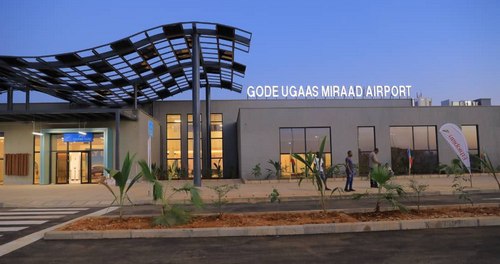
The new state of the art airport terminal is equipped with the latest technology airport facility amenities including a solar system to allow for a smooth and convenient travel via the airport.
Ethiopian Airlines plays a significant role in regional connectivity with its more than 22 destinations in the country. Ethiopian Airlines operates daily flights to/from Gode. Gode being the third airport in Somali Regional State next to Jigjiga and Kebridahar, passengers can travel between Jigjiga and Gode directly without having to transit via Addis Ababa. Gode Airport has been among the airports that Ethiopian has taken a project on to enhance the facilities.
Since the acquisition of the Ethiopian Airports Enterprise by Ethiopian Airlines Group as a Strategic Business Unit (SBU) in 2017, Ethiopian Airlines Group has taken over the administrative role including construction and renovation projects of airports in the country.

Airbus SE (stock exchange symbol: AIR) reported consolidated Full-Year (FY) 2023 financial results and provided guidance for 2024.
Gross commercial aircraft orders totalled 2,319 (2022: 1,078 aircraft) with net orders of 2,094 aircraft after cancellations (2022: 820 aircraft). The order backlog amounted to 8,598 commercial aircraft at the end of 2023. Airbus Helicopters registered 393 net orders (2022: 362 units), which were well spread across programmes and corresponds to a book-to-bill ratio above 1 both in units and value. Airbus Defence and Space's order intake by value increased 15 percent to 15.7 billion (2022: 13.7 billion), corresponding to a book-to-bill of around 1.4 by value. Fourth quarter orders included 16 C295 aircraft for Spain.
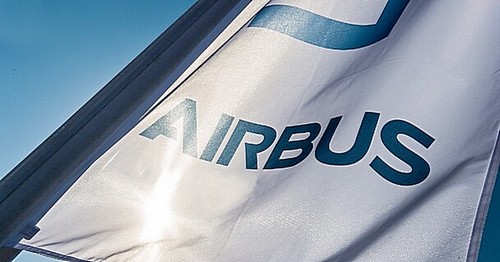
Consolidated revenues increased 11 percent year-on-year to 65.4 billion (2022: 58.8 billion). A total of 735 commercial aircraft were delivered (2022: 661(1) aircraft), comprising 68 A220s, 571 A320 Family, 32 A330s and 64 A350s. Revenues generated by Airbus' commercial aircraft activities increased 15 percent, mainly reflecting the higher number of deliveries. Airbus Helicopters' deliveries were stable at 346 units (2022: 344 units) with revenues rising 4 percent, reflecting the overall performance across programmes and services. Revenues at Airbus Defence and Space increased 2 percent, mainly driven by Military Air Systems and Connected Intelligence, offset by some updated Estimates at Completion of certain Space programmes. A total of 8 A400M military airlifters were delivered (2022: 10 aircraft).
Consolidated EBIT Adjusted - an alternative performance measure and key indicator capturing the underlying business margin by excluding material charges or profits caused by movements in provisions related to programmes, restructuring or foreign exchange impacts as well as capital gains/losses from the disposal and acquisition of businesses - was 5,838 million (2022: 5,627 million).
EBIT Adjusted related to Airbus' commercial aircraft activities increased to 4,818 million (2022: 4,600 million), reflecting the higher deliveries and a more favourable hedge rate, partially offset by investments for preparing the future. FY 2022 included the non-recurring positive impacts from retirement obligations and compliance-related topics partly offset by the impact resulting from international sanctions against Russia, while in H1 2023 provisions were released for 0.1 billion from compliance-related topics.
The A220 ramp-up continues towards a monthly production rate of 14 aircraft in 2026, with a focus on the programme's industrial maturity and financial performance. On the A320 Family programme, production is progressing well towards the previously announced rate of 75 aircraft per month in 2026. In 2023, construction of the second A320 Final Assembly capacities in Tianjin (China) and Mobile (US) commenced and the new A320 Family Final Assembly Line in Toulouse delivered its first aircraft in December. The first customer A321XLR entered into the Final Assembly Line in December, with entry-into-service for the aircraft type expected to take place in Q3 2024.
On widebody aircraft, the Company continues towards a monthly rate of 4 aircraft for the A330 in 2024 and rate 10 in 2026 for the A350.
Airbus Helicopters' EBIT Adjusted increased to 735 million (2022: 639 million), reflecting the strong performance across programmes and services. FY 2022 also included net positive non-recurring elements.
EBIT Adjusted at Airbus Defence and Space decreased to 229 million (2022: 384 million). The decrease reflects 0.6 billion charges resulting from the update of Estimates at Completion of certain Space programmes, partially mitigated by the performance of the rest of the business. FY 2022 included some non-recurring elements, notably from the loss of two Pleiades Neo satellites.
On the A400M programme, development activities continue towards achieving the revised capability roadmap. Retrofit activities are progressing in close alignment with the customer. In 2023, an additional update of the contract estimate at completion has been performed and a net charge of 41 million recorded. Risks remain on the qualification of technical capabilities and associated costs, on aircraft operational reliability, on cost reductions and on securing overall volume as per the revised baseline.
Consolidated self-financed R&D expenses totalled 3,257 million (2022: 3,079 million).
Consolidated EBIT (reported) amounted to 4,603 million (2022: 5,325 million), including net Adjustments of -1,235 million.
These Adjustments comprised:
-1,030 million related to the dollar working capital mismatch and balance sheet revaluation, of which -224 million were in Q4. This mainly reflects the phasing impact arising from the difference between transaction date and delivery date;
-89 million related to the Aerostructures transformation, of which -32 million were in Q4;
-41 million related to the A400M programme, of which -41 million were in Q4;
-75 million of other costs including compliance, of which -19 million were in Q4.
The financial result was 166 million (2022: -250 million). It mainly reflects a positive impact from the revaluation of certain equity investments. Consolidated net income (2) was 3,789 million (2022: 4,247 million) with consolidated reported earnings per share of 4.80 (2022: 5.40).
Consolidated free cash flow before M&A and customer financing was 4,386 million (2022: 4,680 million), mainly reflecting the level of commercial aircraft deliveries as well as the strong performance in all businesses. Consolidated free cash flow of 3,885 million (2022: 4,324 million) included -65 million for M&A activities and -436 million of customer financing, mostly related to the planned execution of certain contractual obligations. The gross cash position stood at 25.3 billion at the end of 2023 (year-end 2022: 23.6 billion), with a consolidated net cash position of 10.7 billion (year-end 2022: 9.4 billion).
The Board of Directors will propose the payment of a 2023 dividend of 1.80 per share (2022: 1.80 per share) and a special dividend of 1.00 per share to the 2024 Annual General Meeting taking place on 10 April 2024. The proposed payment date is 18 April 2024.


Hawaiian Holdings, Inc. ("Hawaiian") (NASDAQ: HA) today announced that its stockholders have voted to adopt the merger agreement with Alaska Air Group, Inc. ("Alaska") (NYSE: ALK). A substantial majority of the holders of Hawaiian's stock voted in favour of the merger, according to preliminary results from the special meeting held earlier today. Hawaiian will file the final voting results, as tabulated by an independent inspector of elections, on a Form 8-K with the U.S. Securities and Exchange Commission.
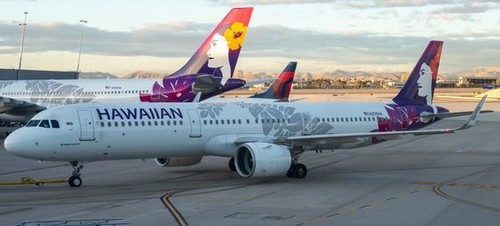
The transaction remains subject to receipt of required regulatory approvals, along with other customary closing conditions. Hawaiian and Alaska continue to expect to complete the transaction within 12 to 18 months of announcement of the transaction, which occurred on 3 Dec, 2023.


Ontario International Airport (ONT) welcomed nearly 470,000 passengers in January, including a record-setting 45,012 international travellers, airport officials announced.
The January total passenger volume of 469,589, a 9.5% increase over the same month last year, included 424,577 domestic passengers. The domestic figure represented a 4.8% increase year over year.
"The new year began as last year ended with growth in passenger volume remaining strong," said Atif Elkadi, chief executive officer of the Ontario International Airport Authority (OIAA), noting that January marked the 35th consecutive month of year-over-year passenger increases at ONT.
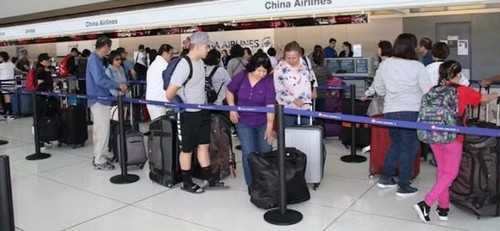
Elkadi pointed to strong job growth in the Inland Empire as a contributor to ONT's steady passenger growth, which continues to outpace peer airports. According to the Orange County Register, the Inland Empire gained 128,400 jobs between 2019 and 2023, making it the top job-producing region in the state of California.
Population growth in ONT's catchment area, meanwhile, has made the Inland Empire the 12th largest of 386 Metropolitan Statistical Areas in the U.S., ahead of San Francisco and just behind No. 11 Boston, according to recent U.S. Census data.
Ontario International Airport (ONT) is the fastest growing airport in the United States, according to Global Traveler, a leading publication for frequent fliers. Located in the Inland Empire, ONT is approximately 35 miles east of downtown Los Angeles in the center of Southern California. It is a full-service airport which offers nonstop commercial jet service to two dozen major airports in the U.S., Mexico, Central America and Taiwan.
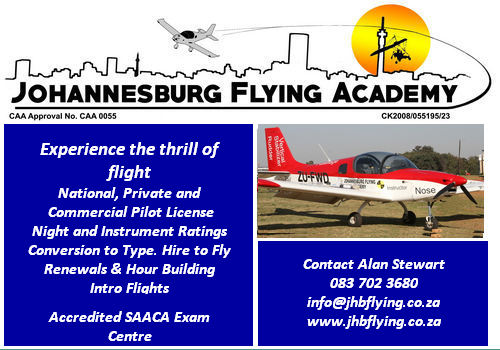

Russia, Novosibirsk, Tolmachevo Airport (OVB/UNNT): An Alrosa Airlines Boeing 737-800 (RA-73264), contacted a refuelling vehicle on the apron at Novosibirsk-Tolmachevo Airport (OVB). The lower fin of the left wing sharklet struck the vehicle. The plane was grounded to determine damage.
Russia, Near Nizhnevartovsk: An Azimuth Superjet returned to its departure airport due to the landing gear not being retracted. In the morning at 07:25 (local time) Sukhoi Superjet 100 (RA-89121) of Azimut Airlines took off from Nizhnevartovsk to Mineralnye Vody. After take-off, the PIC reported that the front landing gear was not retracted. After more than a two hour wait in the holding pattern the aircraft ran low on fuel and it returned to Nizhnevartovsk.
Germany, Leipzig Airport (LEJ/EDDP): A European Air Transport Airbus A300F4-622R, suffered a tail strike during an attempted landing on runway 26L at Leipzig Airport (LEJ), Germany. The flight crew performed a go-around and proceeded for a landing on runway 26R, 18 minutes later.
Moscow Sheremetyevo International Airport (SVO/UUEE) - An Airbus A320neo of Aeroflot airlines with 143 passengers on board landed at Sheremetyevo Airport. While towing tail-first, the plane's wing collided with a self-propelled passenger ramp. The left-wing tip was partially destroyed. The aircraft is currently suspended from flights
Norway, Oslo-Gardermoen Airport (OSL/ENGM): A Norwegian Boeing 737-800 (LN-ENO) contacted another Norwegian Boeing 737-800 (SE-RPI) while being pushed back from the gate at Oslo-Gardermoen Airport (OSL). The left winglet hit the left horizontal stabilizer of SE-RPI.

Ford Tri Motor Flight 2013

Google Banner Ad
 |
 |
 Copyright © 2024 Pilot's Post PTY Ltd
The information, views and opinions by the authors contributing to Pilots Post are not necessarily those of the editor or other writers at Pilots Post.
Copyright © 2024 Pilot's Post PTY Ltd
The information, views and opinions by the authors contributing to Pilots Post are not necessarily those of the editor or other writers at Pilots Post.